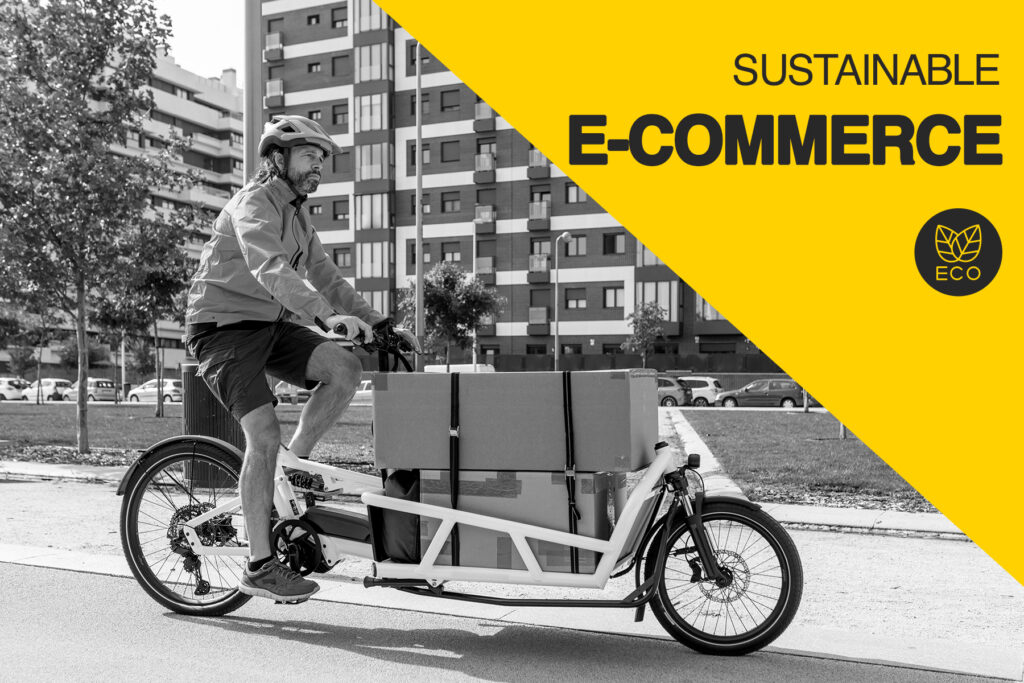In the age of digital commerce, sustainability has emerged as a crucial consideration for e-commerce businesses. As consumers become more eco-conscious, they seek products and services that align with their values. To thrive in this evolving landscape, e-commerce websites must adapt and take meaningful steps towards sustainability.
In this article I delve into strategies and initiatives that e-commerce companies can implement to increase their sustainability impact.
The Importance of Sustainability in E-commerce
Sustainability is no longer a mere buzzword but a driving force in consumer choices. E-commerce companies that prioritize sustainability not only meet customer expectations but also enjoy long-term benefits, including cost savings and improved brand reputation.
With continuously growing number of online purchases and with that number of shipments, it is obvious that finding ways to be more sustainable and have lesser impact on environment is not only a trend, but a moral obligation.
Sustainable Packaging Solutions
One of the most visible ways e-commerce businesses can promote sustainability is through eco-friendly packaging.
Biodegradable materials, minimalistic designs, and efficient packaging techniques can reduce waste and enhance the brand’s eco-friendly image.
Using sustainable packaging when shipping products can carry certain risks, primarily related to the potential for damage to the items being transported. Sustainable materials, while environmentally friendly, may not always offer the same level of protection as traditional packaging options. These risks include the vulnerability of fragile products to breakage, moisture infiltration that can harm goods, and the potential for structural integrity issues during transit.
Companies must strike a balance between sustainability and product protection to ensure that their eco-conscious efforts do not compromise the safety and quality of the items they are shipping. Adequate testing and careful selection of sustainable packaging materials are essential steps in mitigating these risks and ensuring a successful and environmentally responsible shipping process.
Eco-Friendly Product Sourcing
E-commerce companies can significantly enhance their sustainability efforts by sourcing materials and products from environmentally friendly vendors. This approach aligns with the growing consumer demand for eco-conscious practices and contributes to a healthier planet. Here are several strategies for achieving this:
- Vendor Selection: E-commerce companies should prioritize partnerships with vendors that share their commitment to sustainability. This entails evaluating potential suppliers based not only on cost and quality but also on their environmental practices, such as responsible sourcing, reduced waste, and energy-efficient manufacturing processes.
- Certifications and Standards: Look for vendors with recognized certifications and standards for sustainability. For example, suppliers that adhere to ISO 14001 (environmental management) or Fair Trade certifications demonstrate a commitment to ethical and eco-friendly practices.
- Local Sourcing: Reducing the carbon footprint associated with shipping can be achieved by sourcing products from local vendors. This minimizes transportation emissions and supports local economies.
- Recycled and Renewable Materials: Encourage vendors to use recycled and renewable materials in their product offerings. For example, opting for recycled packaging materials or products made from sustainable resources like bamboo or organic cotton can significantly reduce the environmental impact.
Energy-Efficient Operations
Reducing energy consumption in warehouses, offices, and data centers not only cuts costs but also lowers the carbon footprint. Implementing energy-efficient technologies and practices can be a significant step towards sustainability.
Reducing Carbon Footprint in Shipping
Shipping is a critical aspect of e-commerce, and it can have a substantial environmental impact.
Companies can explore options like optimizing delivery routes, using electric vehicles, or even investing in carbon offset programs to mitigate emissions.
Another great way to reduce carbon footprint in shipping, especially useful for B2B e-commerce websites with regular customer orders is grouping orders and shipping multiple ones at the same time.
Conclusion
Sustainability in e-commerce is no longer an option but a necessity. By adopting eco-friendly packaging, responsible sourcing, energy-efficient operations, and transparent communication, e-commerce companies can bridge the gap between clicks and green. Embracing sustainability not only benefits the planet but also enhances brand reputation and ensures long-term success.


